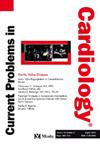1999-2022年美国中年人心力衰竭相关死亡率趋势
IF 3
3区 医学
Q2 CARDIAC & CARDIOVASCULAR SYSTEMS
引用次数: 0
摘要
心衰(HF)是导致发病率和死亡率的重要因素。在COVID-19大流行期间,中年人心力衰竭死亡率的趋势尚未完全确定。我们的目标是分析1999年至2022年不同人口和地理类别(包括性别、种族和人口普查地区)与心力衰竭相关的死亡率趋势,特别关注COVID-19大流行对心力衰竭死亡率的影响。方法:从疾病控制和预防中心广泛在线流行病学研究数据(CDC WONDER)数据库中提取心力衰竭相关死亡率数据,并按不同的人口和地理分组进行分层。使用关节点回归确定死亡率随时间的统计学显著趋势。结果:从1999年到2011-2013年,大多数研究人群的心力衰竭死亡率下降,然后到2022年上升,通常在2020-2022年的大流行年死亡率显着增加。男性、黑人或非裔美国人以及南方的死亡率通常高于人口或地理上的同类。在大流行期间,高危群体和其他群体之间存在的差距普遍加剧。结论:新冠肺炎大流行加速了十年来心力衰竭死亡率的上升,并在某些类别上加剧了现有的差距。这可能是由于大流行期间获得医疗保健的机会减少,以及COVID-19引起的心力衰竭死亡率直接增加。本文章由计算机程序翻译,如有差异,请以英文原文为准。
Trends in heart failure-related mortality among middle-aged adults in the United States from 1999-2022
Introduction
Heart failure (HF) represents a significant contributor to morbidity and mortality. Heart failure mortality trends among the middle aged have not been fully characterized into the years of the COVID-19 pandemic. Our objective was to analyze the trends in mortality related to heart failure across various demographic and geographic categories—including gender, race, and census region—spanning from 1999 to 2022, with particular attention paid to the effect of the COVID-19 pandemic on HF mortality.
Methods
Heart failure-related mortality data were extracted from the Centers for Disease Control and Prevention Wide-ranging Online Data for Epidemiologic Research (CDC WONDER) database and stratified into different demographic and geographic groups. Statistically significant trends in mortality over time were identified using Joinpoint regression.
Results
Heart failure mortality decreased among most studied demographic groups from 1999 to 2011-2013, then increased through 2022, often with a marked increase in mortality in the pandemic years of 2020-2022. Males, Black or African Americans, and the South generally had higher mortality rates than their demographic or geographic counterparts. Existing disparities between high-risk groups and others generally worsened during the pandemic.
Conclusion
The COVID-19 pandemic accelerated a decade of heart failure mortality increases, and in some categories worsened existing disparities. This is likely due to reduced access to healthcare during the pandemic, along with a direct increase in mortality from heart failure caused by COVID-19.
求助全文
通过发布文献求助,成功后即可免费获取论文全文。
去求助
来源期刊

Current Problems in Cardiology
医学-心血管系统
CiteScore
4.80
自引率
2.40%
发文量
392
审稿时长
6 days
期刊介绍:
Under the editorial leadership of noted cardiologist Dr. Hector O. Ventura, Current Problems in Cardiology provides focused, comprehensive coverage of important clinical topics in cardiology. Each monthly issues, addresses a selected clinical problem or condition, including pathophysiology, invasive and noninvasive diagnosis, drug therapy, surgical management, and rehabilitation; or explores the clinical applications of a diagnostic modality or a particular category of drugs. Critical commentary from the distinguished editorial board accompanies each monograph, providing readers with additional insights. An extensive bibliography in each issue saves hours of library research.
 求助内容:
求助内容: 应助结果提醒方式:
应助结果提醒方式:


